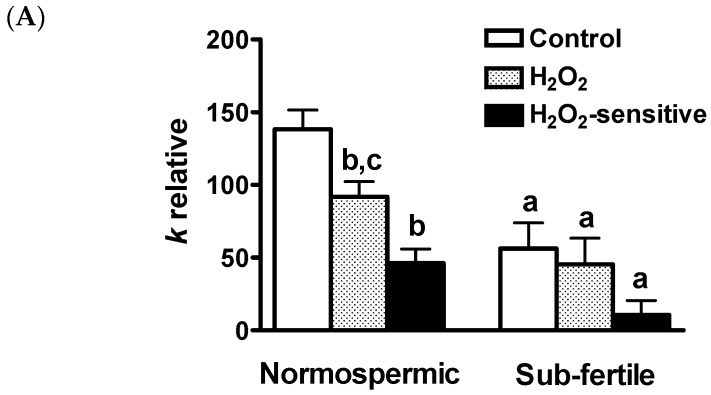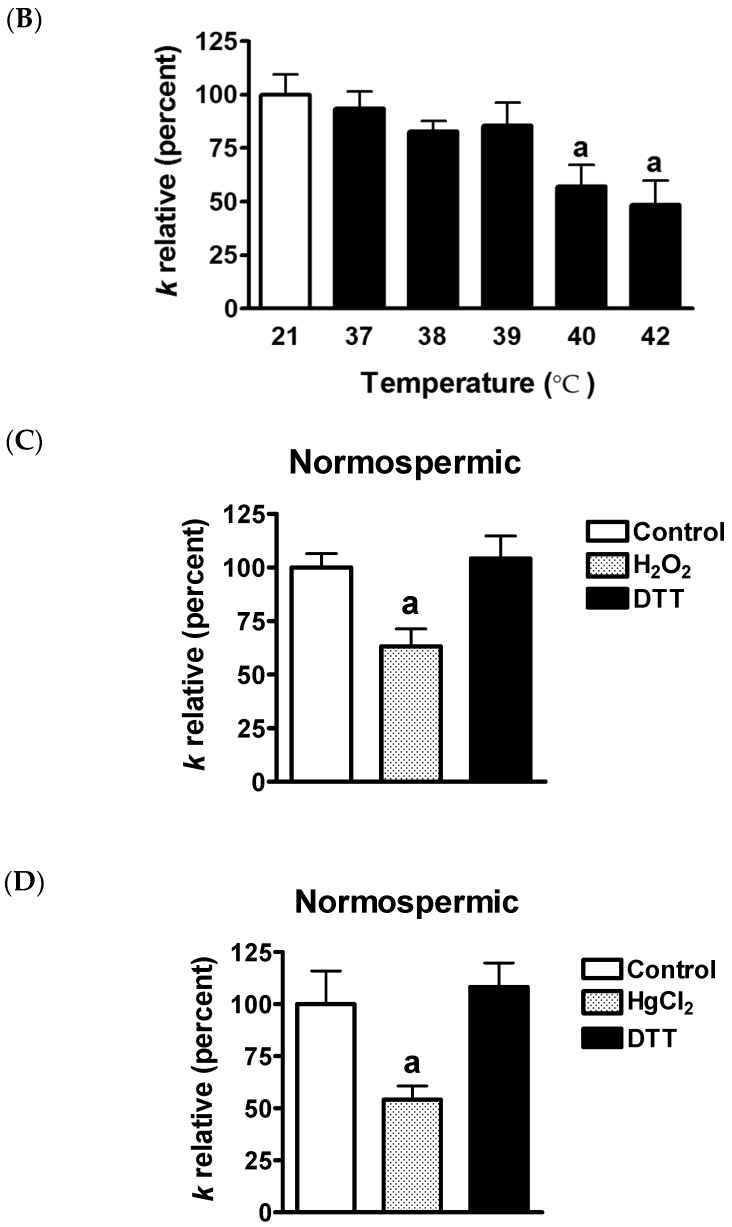Figure 4.
Effect of oxidative stress on the water permeability of human ejaculated semen. (A) Effect of hydrogen peroxide (H2O2). Sperm cells were exposed to a 150 mOsm osmotic gradient in two different conditions: untreated cells (Control) and cells treated for 45 min with 50 μM H2O2 to induce an oxidative stress condition. The H2O2-sensitive water permeability was obtained by subtracting H2O2 insensitive water permeability from total water permeability. a, p < 0.05 vs. normospermic (Student’s t test); b, p < 0.05 vs. Control and c, p < 0.05 vs. H2O2-sensitive (ANOVA, followed by Newman–Keuls’s Q test); (B) Temperature dependence: The osmotic water permeability of human ejaculated semen from normospermic subjects was measured after cells exposure for three hours to different temperature (from 21 to 42 °C). a, p < 0.05 vs. 21 °C (ANOVA, followed by Newman–Keuls’s Q test); (C,D) Reversible effect of hydrogen peroxide (H2O2) and mercury chloride (HgCl2). (C) Sperm cells were exposed to a 150 mOsm osmotic gradient in three different conditions: untreated cells (Control), cells treated for 45 min with 50 μM H2O2, cells treated with H2O2 followed by 15 min treatment with 5 mM dithiothreitol (DTT); (D) Sperm cells were exposed to a 150 mOsm osmotic gradient in three different conditions: normal untreated cells (Control), cells treated for 15 min with 100 μM HgCl2 (HgCl2), cells treated with HgCl2 followed by 15 min treatment with 5 mM DTT. a, p < 0.05 vs. Control and DTT (ANOVA, followed by Newman–Keuls’s Q test). Bars represent the osmotic water permeability of sperm cells expressed as k relative (A) or percent of k relative (B–D). Values are means ± SEM of 4–15 single shots for each of 8–9 different experiments.


